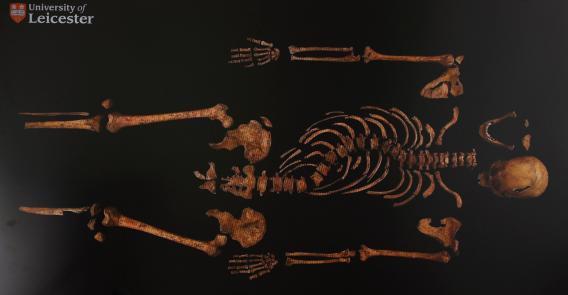The bones found underneath a parking lot in Leicester, England, are “beyond reasonable doubt” those of King Richard III, experts at the University of Leicester announced today.
Richard III, as you might remember from the eponymous Shakespeare play, died in the last major battle of the War of the Roses in 1485, although his resting place remained largely a mystery. At least until now.
Why are the archaeologists so certain they’ve found their man? Well, for starters the skeleton’s wounds are consistent with accounts of the fight that killed the king. According to the New York Times, there were also other potential giveaways. The remains were of the right age—the king was 32 when he died—and showed signs of a diet rich in protein, something indicative of a privileged life at the time. There was also a curve to the spine consistent with scoliosis, said to give Richard his hunchback. Oh, and the bones were found at the exact spot that priest and historian John Rouse identified as the king’s final resting place way back in 1490.*
That was all well and good but not enough for a beyond-reasonable-doubt conclusion. That came only after experts got the results of a recent DNA test that showed samples taken from the skeleton matched up with those taken from two known descendants of the the House of Plantagenet, the royal family that ended its reign with Richard III’s death.
Today’s announcement marks one of the biggest archaeological finds in the country in recent memory. But what does it all mean? For those who aren’t simply nerding out over cool historical finds, the BBC has a deeper explanation. Despite its depiction in Shakespeare, actual knowledge of the battle that killed Richard III is incomplete. His skeleton, bearing at least some of the wounds he sustained in his last moments, will likely tell more of the story.
*Correction, Feb. 4, 2013: An earlier version of this post cited a New York Times article that misidentified Rouse as a 16th-century historian. The John Rouse in question died in 1491. Some historical accounts use an alternate spelling of his last name, Rous.
This post was updated at 12:29 p.m. for clarity.
